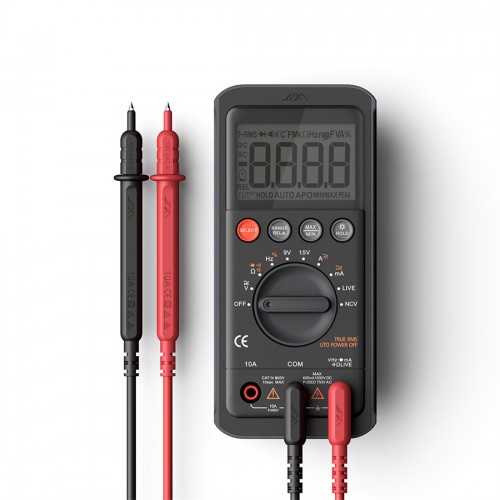
A complete toolbox is a maker's top resource for common duties like sizing wood and attaching screws with accuracy. This compendium presents expertise to select suitable gear and apply it effectively.
- Start by putting together a basic kit of necessary hand tools such as hammers, drivers, wrenches, pliers, saws, and tapes.
- Master the use and intended functions of each tool for distinct tasks.
- Develop techniques through active projects, gradually making tasks more complex.
Bear in mind training with hand tools strengthens your workmanship. With correct expertise, tools act as extensions of your skills to complete challenging projects precisely.
Take Control of Your Tasks with Power Tools
Aiming to improve workflows? Investigate power tools that bring together accuracy and effectiveness. These indispensable devices can reshape how you work, for pros and hobbyists alike. From heavy drills to precision cutting saws, power tools bring numerous capabilities for building projects.
- Employ cordless impact drivers for fast and effortless fastening and demo activities.
- Become proficient with reciprocating saws to perform fast clean cuts in wood, metal and more.
- Improve woodworking outcomes via strong planers and jointers providing fine finishes.
Use power tools to streamline timelines and deliver remarkable project results.
Spot-On Measurements Simplified
In precise work, appropriate measuring tools are the key differentiator. From basic rulers to advanced laser levels, indispensable instruments help realize designs with exact precision. Whether veteran artisan or new hobbyist, mastering essential measuring tools opens many possibilities.
- Peruse the full spectrum of measurement instruments for distinct tasks.
- Comprehend the specialized roles and benefits of every measuring tool type.
- Build competence in exact measurement techniques and their use.
Essential Kits for Every Work
Whether pro or hobbyist, the correct tool kit is vital for any task. In jobs from screwwork to furniture assembly, a proper set ensures efficient, safe and accurate results. When choosing a set, reflect on which projects you will do most often.
Consider whether a broad tool collection or a concise specialized kit fits your needs? Having clarified demands, investigate various brands to compare specs, quality and pricing. Be sure to consult user reviews online for practical feedback prior to purchase.
With a little research and planning, you can find the perfect tool set that will empower you to accomplish any project with confidence.
Tool Upkeep: Keep Your Hand Tools Performing
Regular care of hand tools remains essential for reliable craft work. Skipping care leads to blunt cutting edges, part failures and unsatisfying results. Periodic maintenance retains tools in excellent shape and secures longevity. Post-use cleaning removes dust and debris to protect tools. Shelter tools in dry storage to minimize rust and corrosive damage.
- Sharpen cutting tools consistently with a stone or fine file.
- Lubricate moving parts with appropriate oil to reduce friction and wear.
- Inspect grips routinely for wear and substitute damaged handles as necessary.

By following these simple maintenance tips, you can maximize the lifespan of your hand tools and enjoy a more efficient and rewarding work experience.
Must-Have Hand Tools for Home Workshops
A well-equipped home workshop is a haven for DIY enthusiasts and hobbyists alike. Special tools are handy yet basic hand tools form the backbone of project work. A must-have selection includes a reliable hammer, a versatile adjustable wrench, and a sturdy tape measure for accurate measurements. Have an assortment of screwdrivers, capable pliers and a utility knife for cutting materials. A reliable saw enables accurate cuts while a level maintains straight, even results.
- Fundamental Hand Tools for Your Workshop

Your Guide to Safe Power Tool Use
Power tools are high-powered tools that yield considerable efficiency and force. However these devices necessitate comprehensive knowledge of protective protocols. Not following precautions can yield serious injury outcomes. This compendium explains power tool safety, offering knowledge to ensure secure operation.
Kick off by learning your tools—read manuals thoroughly and absorb the specific safety features. Consistently wear suitable protective gear—safety glasses, ear protection and gloves. Inspect and service tools routinely to verify reliable operation.
Safety should always be the leading consideration in any work area. Complying with these precautions ensures you can use power tools safely and with confidence.
Picking Accurate Measuring Tools
In obtaining accurate measurements, the measuring tools you opt for play a critical role. A selection of measuring instruments exists, each tailored to specific purposes. Comprehending measurement tool traits is vital for proper choice. Assess attributes such as accuracy, resolution and measurement range while selecting instruments.
- When measuring length accurately, a ruler or tape is the standard choice.
- To measure angles, a protractor is essential.
- Electronic calipers work well for tiny measurements.
Careful choice of appropriate tools secures precise and dependable results.
Choosing the Best Comprehensive Tool Set

Choosing the right tool set can be an exciting but daunting task. With a plethora of options available, it's easy to feel overwhelmed. This complete guide supplies the knowledge to determine the best set for requirements.
First, evaluate the kinds of projects you will commonly perform. Do you have professional experience or are you starting out? Clearly stating goals focuses choices.
- Utilize both categories of tools to achieve efficient, successful project results Blend both tool types where appropriate to maximize productivity and precision Use both hand and power tools together when suitable for optimal, efficient results
- Concentrate on securing essential tools
- A quality hammer, plus mallet or sledgehammer options
- Screwdrivers plus wrench and plier collections form a crucial versatile set
- Measuring tools including tape and ruler
- Leveling tools like level, plumb bob or transit
Further considerations include the materials used in the construction of the tools, your budget constraints, and brand reputation. Remember durable tool purchases are investments for the long run.
Practical DIY: Use Tools Effectively
Starting out on a DIY project can feel like a big step. However, with the right equipment and know-how, the toughest tasks can be managed. Begin with learning and getting familiar with your tools. Review guides carefully and practice fundamental techniques in a secure environment. Remember, safety should always be your top primary first priority. Adopt safety equipment—goggles, gloves and ear defenders—to defend against hazards.
When selecting tools, focus on durability and dependable build quality. Choose dependable brands that consistently provide tools that last.
Consult seasoned DIYers or knowledgeable staff at your local hardware or home improvement store. Experts and veteran DIYers can give guidance and suggestions to pick the right tools for projects.
- Keep your tools sharp and in good condition.
- Store your tools properly to prevent damage or loss.
- Attempt varied DIY tasks to expand competence and creativity
When to Use Power Tools Versus Hand Tools
Doing repairs or builds? Selecting power or hand tools may present a tricky choice. While powerful robust heavy-duty power tools offer speed and efficiency, classic hand tools remain essential valuable indispensable for precise work and smaller jobs. This summary aids in selecting the most fitting tool option for the work required.
- For detailed, precise work—carving, fitting, intricate fixes—hand tools are ideal. Hand tools commonly offer better control and are more economical options.
- Power tools shine when you need to complete finish accomplish tasks quickly and efficiently, like cutting sawing slicing through wood, drilling boring penetrating holes, or sanding large surfaces. They often cut required effort and time dramatically.
Ultimately, the right tool choice depends on the particular job, your experience and budget. Mixing hand and power tools often yields the best, most efficient outcomes.
